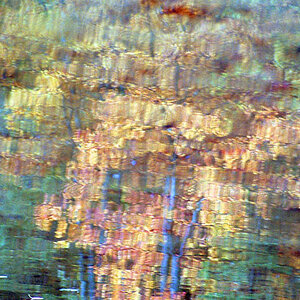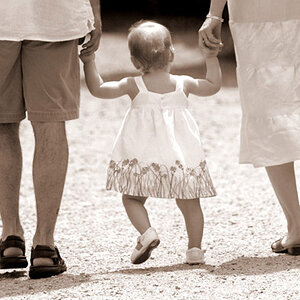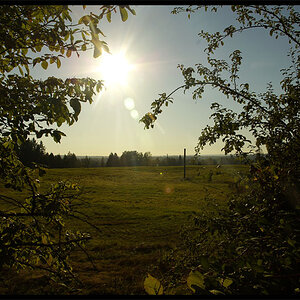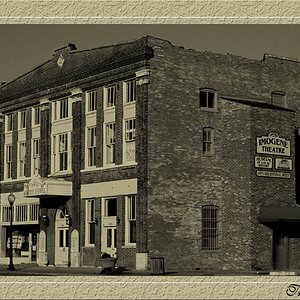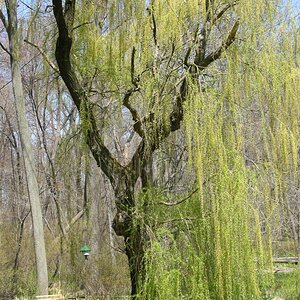Navigation
Install the app
How to install the app on iOS
Follow along with the video below to see how to install our site as a web app on your home screen.

Note: This feature currently requires accessing the site using the built-in Safari browser.
More options
You are using an out of date browser. It may not display this or other websites correctly.
You should upgrade or use an alternative browser.
You should upgrade or use an alternative browser.
battery powered strobe lighting
- Thread starter jplunk
- Start date
Village Idiot
No longer a newbie, moving up!
- Joined
- Mar 20, 2008
- Messages
- 7,269
- Reaction score
- 406
- Location
- Shepherdsturd, WV / Almost, MD
- Can others edit my Photos
- Photos NOT OK to edit
Alien Bees AB800's
elinchrom Dlite4
They'll both do between 320 w/s and 400 w/s iirc. AB's have a problem with color shift at the lower power range. It's noticable, but everyone uses them and they're cheap. The Dlites are a lot more consistent, but some people have reported only being able to get an x sync speed of 1/125 with them. Both are around $800 for a set of 2.
What are you shooting?
elinchrom Dlite4
They'll both do between 320 w/s and 400 w/s iirc. AB's have a problem with color shift at the lower power range. It's noticable, but everyone uses them and they're cheap. The Dlites are a lot more consistent, but some people have reported only being able to get an x sync speed of 1/125 with them. Both are around $800 for a set of 2.
What are you shooting?
Alpha
Troll Extraordinaire
- Joined
- Mar 15, 2005
- Messages
- 5,451
- Reaction score
- 41
- Location
- San Francisco
- Can others edit my Photos
- Photos NOT OK to edit
Monoblocks would not be my top choice.
If you have the cash I'd opt for Hensel Porty, Broncolor Verso, Profoto Acute, Elinchrom Ranger, or Lumedyne.
If you need portable, your only option with Alien Bees is really the Zeus.
As with just about any brand, it's certainly possible to carry around monoblocks and plug them into a battery inverter, but that's a lot of extra bulk and weight to schlep around. If you can stomach the cost, a truly portable system is certainly the way to go.
If you have the cash I'd opt for Hensel Porty, Broncolor Verso, Profoto Acute, Elinchrom Ranger, or Lumedyne.
If you need portable, your only option with Alien Bees is really the Zeus.
As with just about any brand, it's certainly possible to carry around monoblocks and plug them into a battery inverter, but that's a lot of extra bulk and weight to schlep around. If you can stomach the cost, a truly portable system is certainly the way to go.
Mike_E
No longer a newbie, moving up!
- Joined
- Jan 26, 2007
- Messages
- 5,327
- Reaction score
- 266
- Can others edit my Photos
- Photos OK to edit
Try looking into Metz 60's. They're not quite as powerful as you mentioned but they come cheap and are Very portable.
Alpha
Troll Extraordinaire
- Joined
- Mar 15, 2005
- Messages
- 5,451
- Reaction score
- 41
- Location
- San Francisco
- Can others edit my Photos
- Photos NOT OK to edit
Try looking into Metz 60's. They're not quite as powerful as you mentioned but they come cheap and are Very portable.
Flashes (even flash guns) are generally defined by power outputs less than (or sometimes equal to) 200 w/s. Until you start moving up into the Lumedyne or Q-flash range, I don't think there are any that can hit 300 w/s. Perhaps Helen will chime in as I know she's commented on this particular issue before and she knows individual specs better than I do.
Remember you're also not milking every last J (w/s) either if you're using modifiers.
jplunk
TPF Noob!
- Joined
- Mar 20, 2008
- Messages
- 10
- Reaction score
- 0
- Can others edit my Photos
- Photos NOT OK to edit
thanks a lot. i'll be looking into those for sure. i'm shooting portraits close to dusk in a wide open field. i'll have mainly natural light behind but wanted quite a bit of fill light in the foreground that will drop off softly.
jplunk
TPF Noob!
- Joined
- Mar 20, 2008
- Messages
- 10
- Reaction score
- 0
- Can others edit my Photos
- Photos NOT OK to edit
Flashes (even flash guns) are generally defined by power outputs less than (or sometimes equal to) 200 w/s. Until you start moving up into the Lumedyne or Q-flash range, I don't think there are any that can hit 300 w/s. Perhaps Helen will chime in as I know she's commented on this particular issue before and she knows individual specs better than I do.
Remember you're also not milking every last J (w/s) either if you're using modifiers.
thank you. could you elaborate more on modifiers? i'm showing my ignorance here but i don't think i know what that is.
Alpha
Troll Extraordinaire
- Joined
- Mar 15, 2005
- Messages
- 5,451
- Reaction score
- 41
- Location
- San Francisco
- Can others edit my Photos
- Photos NOT OK to edit
thank you. could you elaborate more on modifiers? i'm showing my ignorance here but i don't think i know what that is.
Even with off-camera flashes, it's not uncommon to modify them in some way, especially diffusing them. For example, you might have some flash mounted on top of your camera with a simple translucent white diffuser to soften the light. Or perhaps you want to take the so-called "strobist" approach and mount that small flash on a tripod and modify it some other way, for example fire it into an umbrella or a softbox. Unless you're trying to narrow the focus of the light and increase its intensity using an attachment like a snoot, then any diffusion modifier is going to decrease your overall light output since the goal is to soften it.
It sounds like for your purposes, firing a flash or full-sized strobe (or two) into an umbrella and thus bouncing the light onto your model, will probably be the easiest and most cost effective. You'll likely need multiple flashes if you want to take the "strobist" approach of using camera-mounted hot-shoe flashes. Otherwise a full-sized studio strobe with a battery pack or a professional portable strobe would be excellent. If cost is an issue, or if this is a one-time shoot, then you might consider renting a pro portable setup. If you're going to be doing this a lot in the future and cost is an issue then look into the strobist thing. If cost is not an issue and you'll be doing this a lot in the future then I would strongly suggest shelling out for pro gear. The other advantage of pro gear is that the output is high enough that you can control your light really well even in broad daylight.
Two shooting considerations to keep in mind: 1) You want to match the color temp of the flash light to the ambient/natural color temp. So if there's a sunset at dusk showering everything in warm light, you would probably want to place a warm-colored gel in front of the flash. Conversely if the ambient light is cool, you might want to use a cool-colored gel on the flash. 2) If you light your subject too brightly then the contrast may end up being too high between subject and background and your field will turn out black. Make sure you understand the dynamic range of your camera's sensor or film well and its relation to your flash power. If the ambient and flash meter readings are too far apart then you probably won't make the shot (painting with light, i.e. exposing for ambient and then flashing the subject doesn't work well with people for the obvious reason that they move).
jplunk
TPF Noob!
- Joined
- Mar 20, 2008
- Messages
- 10
- Reaction score
- 0
- Can others edit my Photos
- Photos NOT OK to edit
Even with off-camera flashes, it's not uncommon to modify them in some way, especially diffusing them. For example, you might have some flash mounted on top of your camera with a simple translucent white diffuser to soften the light. Or perhaps you want to take the so-called "strobist" approach and mount that small flash on a tripod and modify it some other way, for example fire it into an umbrella or a softbox. Unless you're trying to narrow the focus of the light and increase its intensity using an attachment like a snoot, then any diffusion modifier is going to decrease your overall light output since the goal is to soften it.
It sounds like for your purposes, firing a flash or full-sized strobe (or two) into an umbrella and thus bouncing the light onto your model, will probably be the easiest and most cost effective. You'll likely need multiple flashes if you want to take the "strobist" approach of using camera-mounted hot-shoe flashes. Otherwise a full-sized studio strobe with a battery pack or a professional portable strobe would be excellent. If cost is an issue, or if this is a one-time shoot, then you might consider renting a pro portable setup. If you're going to be doing this a lot in the future and cost is an issue then look into the strobist thing. If cost is not an issue and you'll be doing this a lot in the future then I would strongly suggest shelling out for pro gear. The other advantage of pro gear is that the output is high enough that you can control your light really well even in broad daylight.
Two shooting considerations to keep in mind: 1) You want to match the color temp of the flash light to the ambient/natural color temp. So if there's a sunset at dusk showering everything in warm light, you would probably want to place a warm-colored gel in front of the flash. Conversely if the ambient light is cool, you might want to use a cool-colored gel on the flash. 2) If you light your subject too brightly then the contrast may end up being too high between subject and background and your field will turn out black. Make sure you understand the dynamic range of your camera's sensor or film well and its relation to your flash power. If the ambient and flash meter readings are too far apart then you probably won't make the shot (painting with light, i.e. exposing for ambient and then flashing the subject doesn't work well with people for the obvious reason that they move).
that does help tremendously. thank you. i guess i did know what modifiers were, just never called them that. again, an ignorance thing. but i AM learning more. that's why i'm here.
Similar threads
- Replies
- 7
- Views
- 243

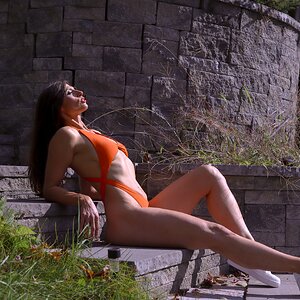
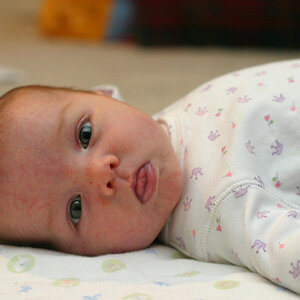
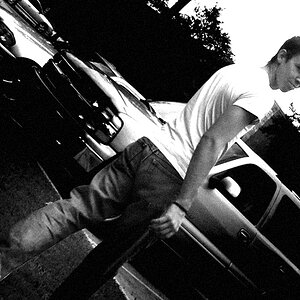
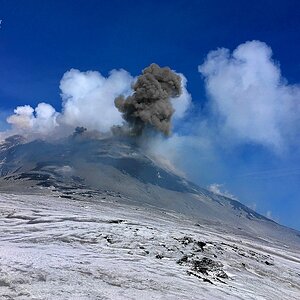
![[No title]](/data/xfmg/thumbnail/41/41899-007f14ae0d832ef200fd62eedc4da42e.jpg?1619739936)
